A Night Walk in Sabino Canyon
After the summer rains begin, more desert animals come out at night
I have some friends who visit Sabino Canyon during the evenings on several occasions every summer once the rains begin. During the heat of Tucson's summers, most desert animals remain inactive during the day. They are active at night and especially once the monsoon rains occur. One thing we can usually count on at Sabino after the rains is the appearance of Red Spotted Toads.
These toads are lightly colored and covered in reddish raised bumps. With the monsoons, a frantic breeding season begins. The Desert Museum and Sabino Canyon Naturalists share a bit more about this toad and this special time of year. Arizona Game and Fish has a nice video about these toads and it is a good way to hear the unmistakable sound they make. In Tucson, keep your windows open at night during the monsoon season and you might recognize this sound.
One of the desert creatures we always hope to find on our walks is the Western Diamondback Rattlesnake. As we were heading back, another walker alerted us to where we could find this rattler which was coiled up at the side of the road. As we reached the spot, we saw another pair of walkers, flashlights and cameras in hand, observing the snake. Once it was our turn, we got to see the snake and spend time with it. My friend Steve Kessel has a nice blog post about this moment on his Sonoran Images site.
Here is a closer look at the snake as it patiently waits for an unsuspecting rodent to come within striking distance. The Desert Museum shares more about this compelling snake with a big reputation. Meanwhile, we kept a safe enough distance and the snake sat calmly. After a very long while, it uncoiled and moved on.
As the Diamondback began to leave the area, a tarantula hawk flew by the rattler's head, startling the snake and causing it to recoil. It then turned, changed directions and moved on. A rattlesnake's tail is made of a protein called keratin- the same substance that our hair and nails are made from. A new segment is added every time a snake sheds its skin. That can happen several times a year, but segments can also break off. Although people believe you can count the rattle segments to age a rattlesnake, there is no relation between the number of segments and the age of the snake.
And of course, what's a summer post-monsoon walk at night without seeing at least one tarantula. This good looking male was walking at an assertive pace in search of love. Here is Sonoran Images again on this specific Tarantula. Steve does a great job discussing this spider so I don't have to!!!
Looking at this Arizona Blonde Tarantula from directly above lets us clearly see its eight legs. The two short "leg-looking" things at the front of the spider are called pedipalps and are used as a sensory organ and for moving prey. The two main body parts of a tarantula include the dark brown abdomen and the lightly colored cephalothorax, which is where the head and thorax have fused into one. The tiny dark spot on the upper right of the cephalothorax is the spider's eight eyes. The Desert Museum has a nice guide on our Tarantulas.
As I mentioned in an earlier newsletter, "water is life in the desert." For animals like the ones in today's post, that message holds true and the monsoon rains seem to awaken the desert.


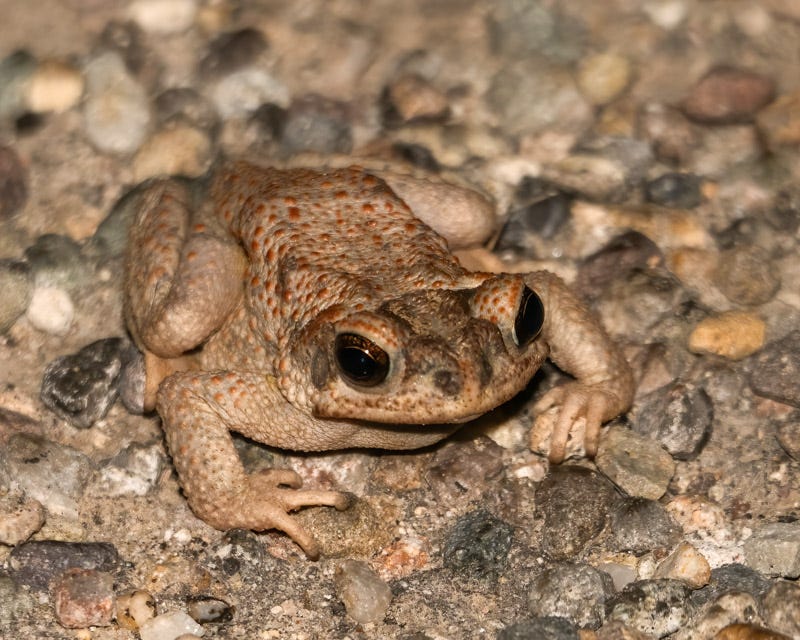
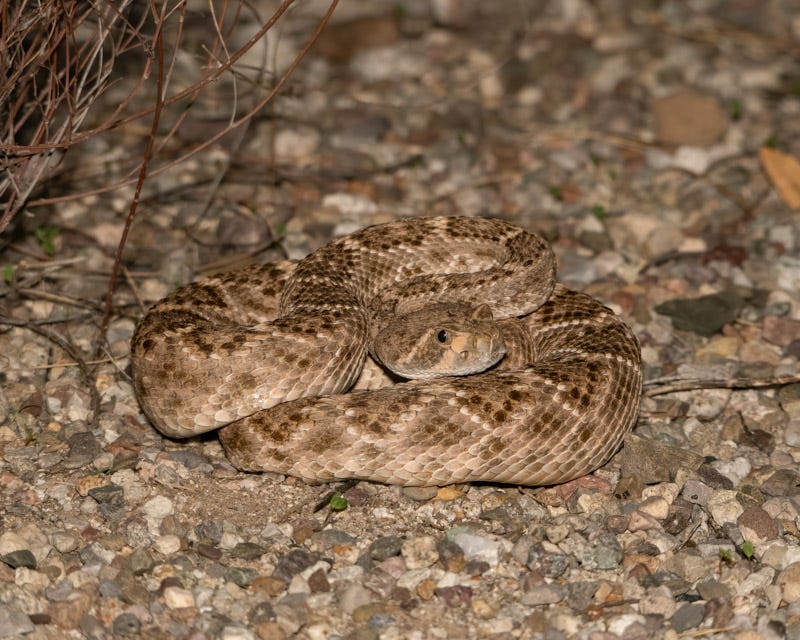
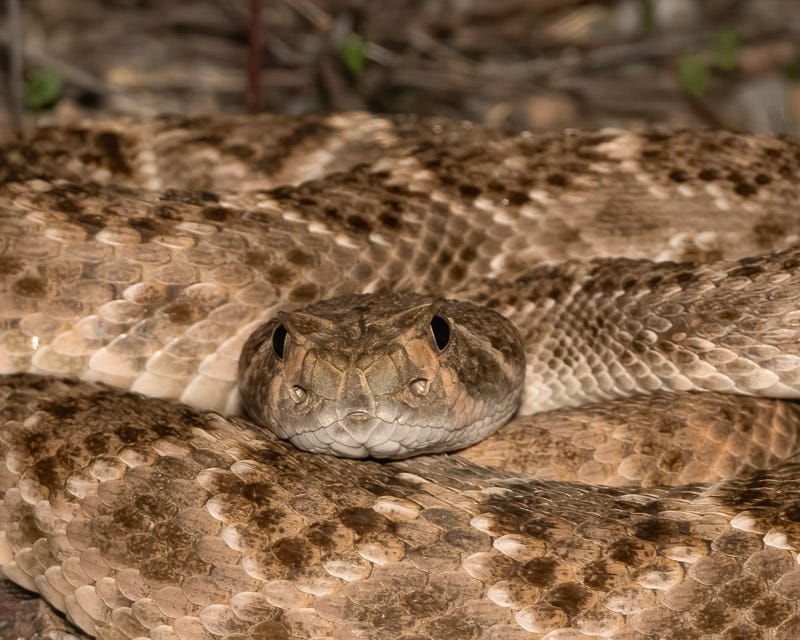
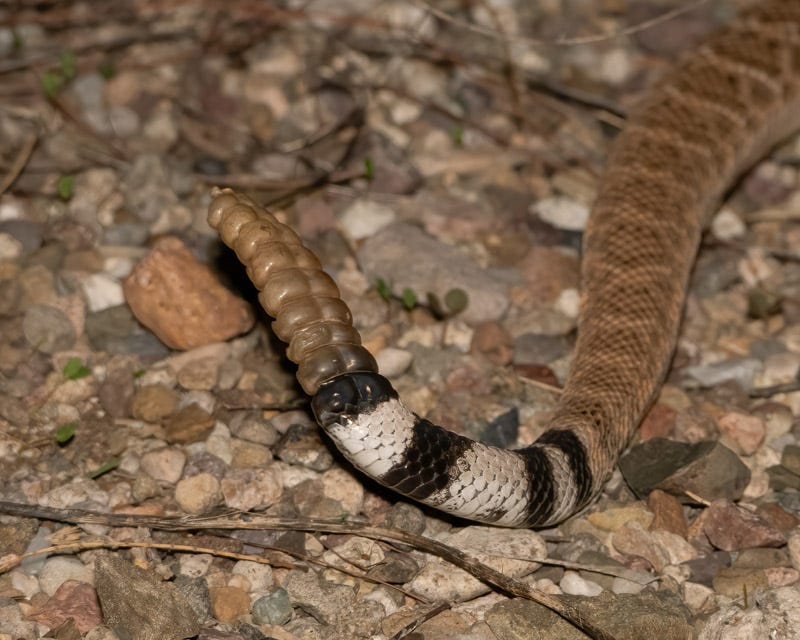
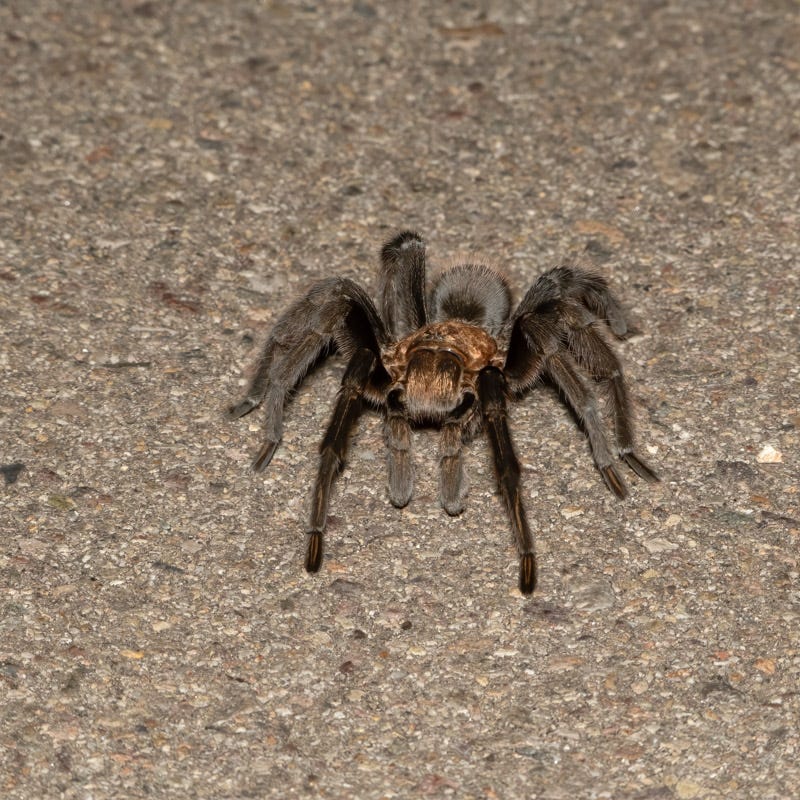
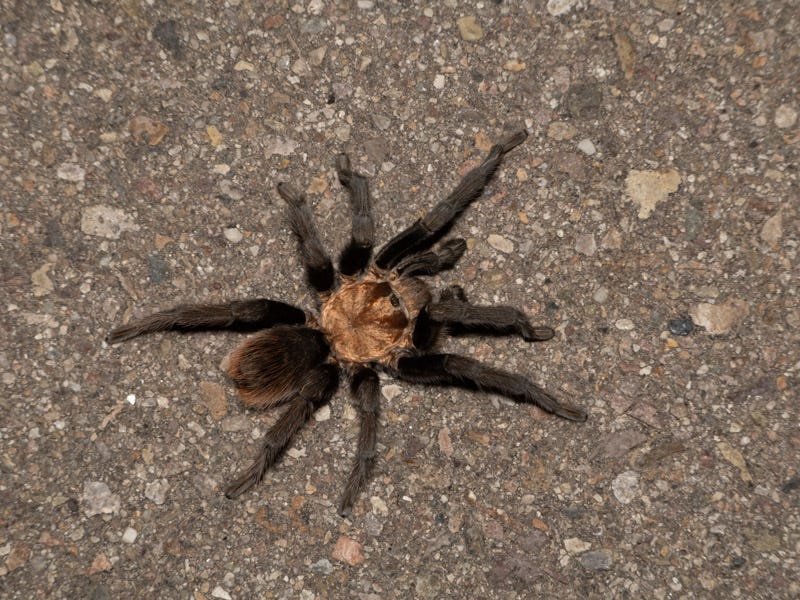
Arizona Blond Tarantula sounds like a specialty margarita!
I remember the toads coming out when the rains started when we lived in Tucson. They were really loud. I miss them.